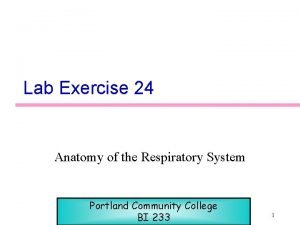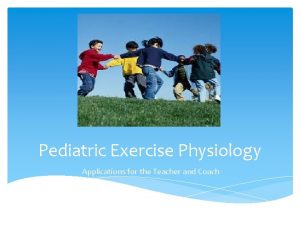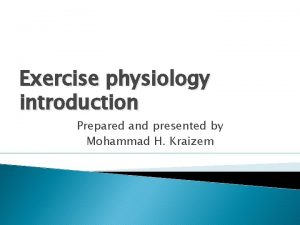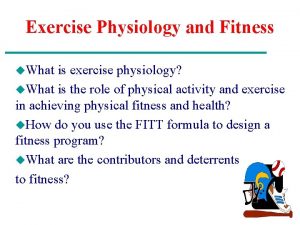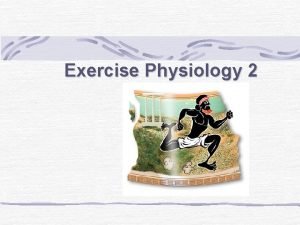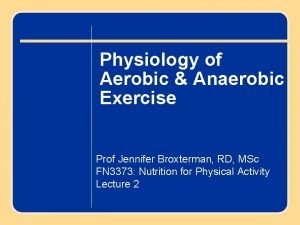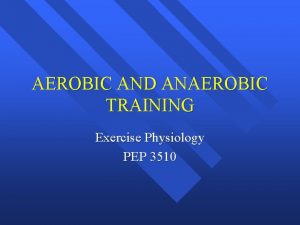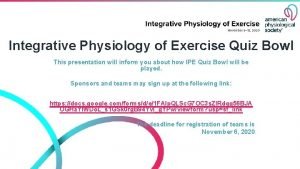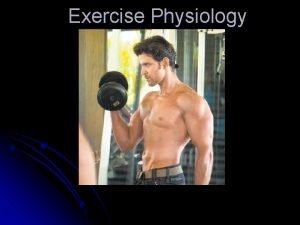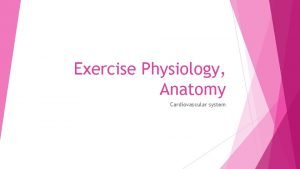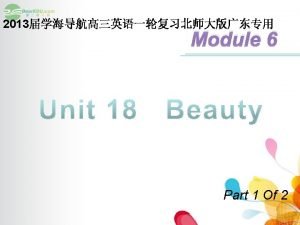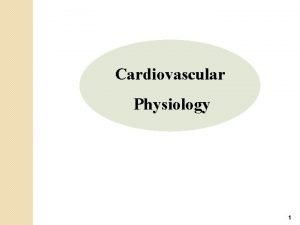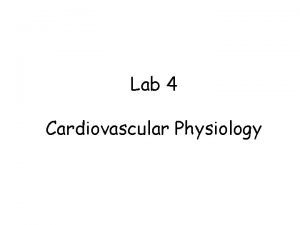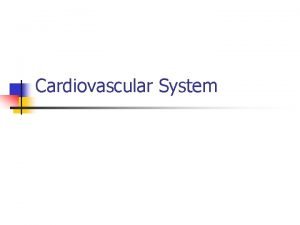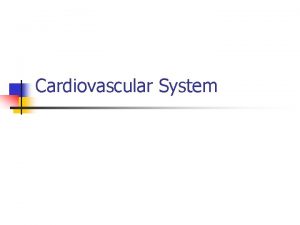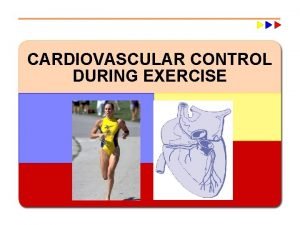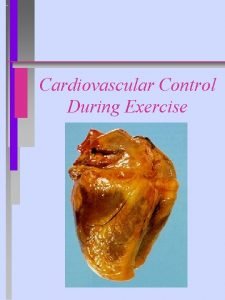Components of Cardiovascular System Exercise Physiology Functions Deliver















- Slides: 15

Components of Cardiovascular System Exercise Physiology

�Functions ◦ Deliver oxygenated blood to muscles; 1900 gals/day ◦ Aerate blood in lungs ◦ Transport heat to surface ◦ Deliver nutrients to tissues ◦ Transport hormones Organization of Circulatory System

Heart Chambers Two Pumps in One � Right heart to lungs � Left heart to body � Right and left atrioventricular valves prevent backflow into atria: tricuspid-right, bicuspid (mitral)-left � Right and left semilunar valves prevent backflow into ventricles: pulmonic-right, aorticleft Circulatory System: Valves

Circulatory System: Heart

�Heart wall composed of 3 layers ◦ Epicardium ◦ Myocardium ◦ Endocardium �Differs from skeletal ◦ Intercalated discs connect cells to permit electrical transmission ◦ Homogenous muscle fibers similar to slow twitch fibers Circulatory System: Myocardium

Cardiac Cycle 1. Ventricular Diastole Ventricular filling and Atrial contraction A-V valve opens Aortic valve closes 2. Beginning of Ventricular Systole A-V valve closes, Isovolumetric Ventricular contraction Aortic valve closed 3. Ventricular Systole Ventricular ejection A-V valve closed Aortic valve opens 4. Beginning of Diastole Isovolumetric Ventricular relaxation A-V valve closed Aortic valve closes Circulatory System: Heart

Vasculature � Arteries: highly muscular, elastic � Capillaries: thin, porous single layer ◦ Capillary branching increases cross section area ◦ Flow velocity inversely proportional to area, so broad capillary beds have slow blood flow Circulatory System

Vasculature �Veins Thinner walls, less muscular Serve as blood reservoir Venous return facilitated by flaps Active cool-down facilitates blood flow Circulatory System

Blood Pressure = cardiac output x total peripheral resistance

�Systolic Blood Pressure: pressure in blood vessel due to surge of blood in aorta and subsequent recoil of aortic wall propagates a wave of pressure through circuit. �Diastolic Blood Pressure: pressure in blood vessel during diastole. �DBP provides indication of peripheral resistance or ease of flow from “a to c”. �Normal systolic BP < _? _ mm Hg and diastolic BP < _? _ mm Hg. Blood Pressure at Rest

�During RHYTHMIC exercise, increase in blood flow and dilation of blood vessels in active muscles cause SBP to __? __ and DBP to __? ___. �During RESISTIVE exercise, sustained muscular forces compress peripheral arteries causing blood pressure __? __. �Upper body exercise has ___ BP than exercise with legs. Blood Pressure during Exercise

�A bout of light- to moderate-intensity exercise decreases SBP for up to ___ hrs. �Pooling of blood in visceral organs and lower extremities reduces central blood volume which contributes to hypotensive recovery response. Blood Pressure during Recovery

�Openings for left and right coronary arteries are in aorta just above the aortic valve. �Aortic valve flaps close coronary arteries during ejection phase. Heart’s Blood Supply

�Myocardial oxygen utilization is 70% to 80% at rest, contrast to 25% other tissues. �In vigorous exercise, coronary blood flow increases 4 -6 x above normal. Heart’s Blood Supply

�Impaired coronary blood flow: angina pectoris (chest pain). �Rate pressure product: estimate of myocardial work (SBP x HR) �Myocardium almost completely aerobic Heart’s Blood Supply
 Anatomy and physiology unit 7 cardiovascular system
Anatomy and physiology unit 7 cardiovascular system Bronchi histology
Bronchi histology Pediatric exercise physiology
Pediatric exercise physiology Meaning of exercise physiology
Meaning of exercise physiology Exercise physiology for health, fitness, and performance
Exercise physiology for health, fitness, and performance Isotonic exercise physiology
Isotonic exercise physiology Isometric exercise physiology
Isometric exercise physiology Exercise physiology mascot
Exercise physiology mascot Exercise intro chapter 1
Exercise intro chapter 1 Pep 3510
Pep 3510 Physiology of sport and exercise 5th edition
Physiology of sport and exercise 5th edition Exercise physiology quiz
Exercise physiology quiz Co=map/tpr
Co=map/tpr Venous blood
Venous blood What makes up the circulatory system
What makes up the circulatory system Rat cardiovascular system simulation
Rat cardiovascular system simulation

